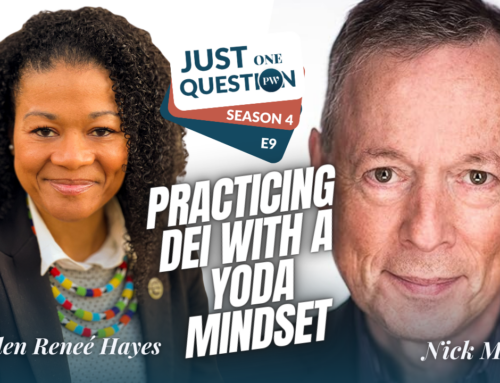Back in the day when I was trying (and not succeeding) to make a living as an actor, one of the classes I took introduced a simple game that I’ve been playing off and on ever since. It was at first useful for developing Improv skills as an actor, then for storytelling skills as a speechwriter, then for passing the time in the car with young children, then as an icebreaker for communications seminars, and so on.
Most recently, as I was listening to a class of trainees try to tell stories, I realized that it is a helpful way to think about how you connect the elements of a story together.
The classic mistake that novice storytellers make is that they tell a story by saying “And then this happened….And then that happened….And then this happened….And then that happened.” The result is a story where all the plot points are related as if they were of the same importance. But that’s never the case in good storytelling – some moments are bigger and more important than others.
That’s structure, and it enables us to thread our way through stories – and indeed life – and make sense of them.
So instead of telling a story as a series of equally important “and thens” trying the Fortunately-Unfortunately game. Here’s how it works. Someone starts telling a story, beginning with the word “fortunately.”
Fortunately, I remembered to bring my lunch with me today.
The next person responds by adding a sentence, using the word “unfortunately.”
Unfortunately, I was attacked by a bear and he ate my sandwich.
And you keep going in this way, adding to the story each time with an opposing beat.
Fortunately, the sandwich distracted the bear so that I was able to get away safely.
Unfortunately, once the bear had finished the sandwich, he came after me anyway.
Fortunately, I had an enormous head start on the bear because it was one of my patented giant sandwiches that take a long time to eat.
Unfortunately, the bear ran very fast and caught up with me.
Fortunately, I still had the cookies from my lunch so I threw those to the bear.
The great thing about the game is that it introduces conflict, which is the heart of good storytelling. Without conflict, you’ll generate little interest in your stories, and they’ll all be just one thing after another, without structure and differentiation.
Last week, I offered the idea of connecting the sentences of your story with “but” or “therefore.” The Fortunately-Unfortunately game makes adding tension and interest to your stories even simpler, by alternating between good news and bad news.
Hollywood scriptwriters, playwrights, and others also focus on raising the stakes each time. They have a technique that involves writing your characters into a trap or a box. In other words, corner them, raise the stakes on them, and see what they do. Are your characters trying to rob a bank? Put the money behind an impenetrable safe door. Then see what they do. Once they break in, put a time limit on things. The safe is in a building that’s going to be demolished in 24 hours! Add opposing characters. The police are coming in after them! Add emotional interest. One of them is going to turn the others in! And so on – keep raising the stakes to keep the audience interested.
It’s really just a more sophisticated way of playing “fortunately – unfortunately,” the game that is at the heart of all good storytelling. Keep these techniques in mind when you’re creating the stories that will bring life to your presentations and speeches. Don’t say, “and then”; say, “unfortunately….”








This is a simple tool that I can imagine working well! I am exploring ways of developing more activity around engaging stories for my classes… I’ll try this out ;-)
Thanks, Conor — let me know how it goes!
[…] Good stories have built-in tension. There is a problem to solve, an obstacle to overcome, a relationship to mend, a lesson to learn. That tension can be totally obscured if the story is presented following the structure: this happened, then this happened and then…. Instead put the chronology on hold and ask if there is a better way to relay what happened so that the audience is invited to participate in the inherent tension of the story. […]